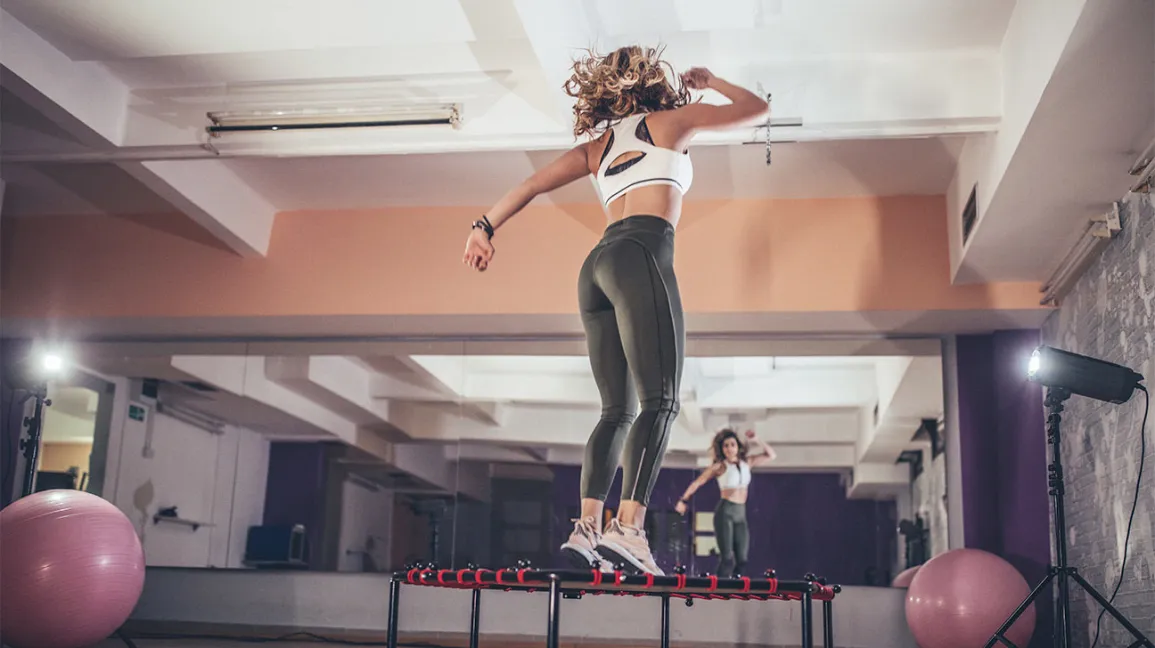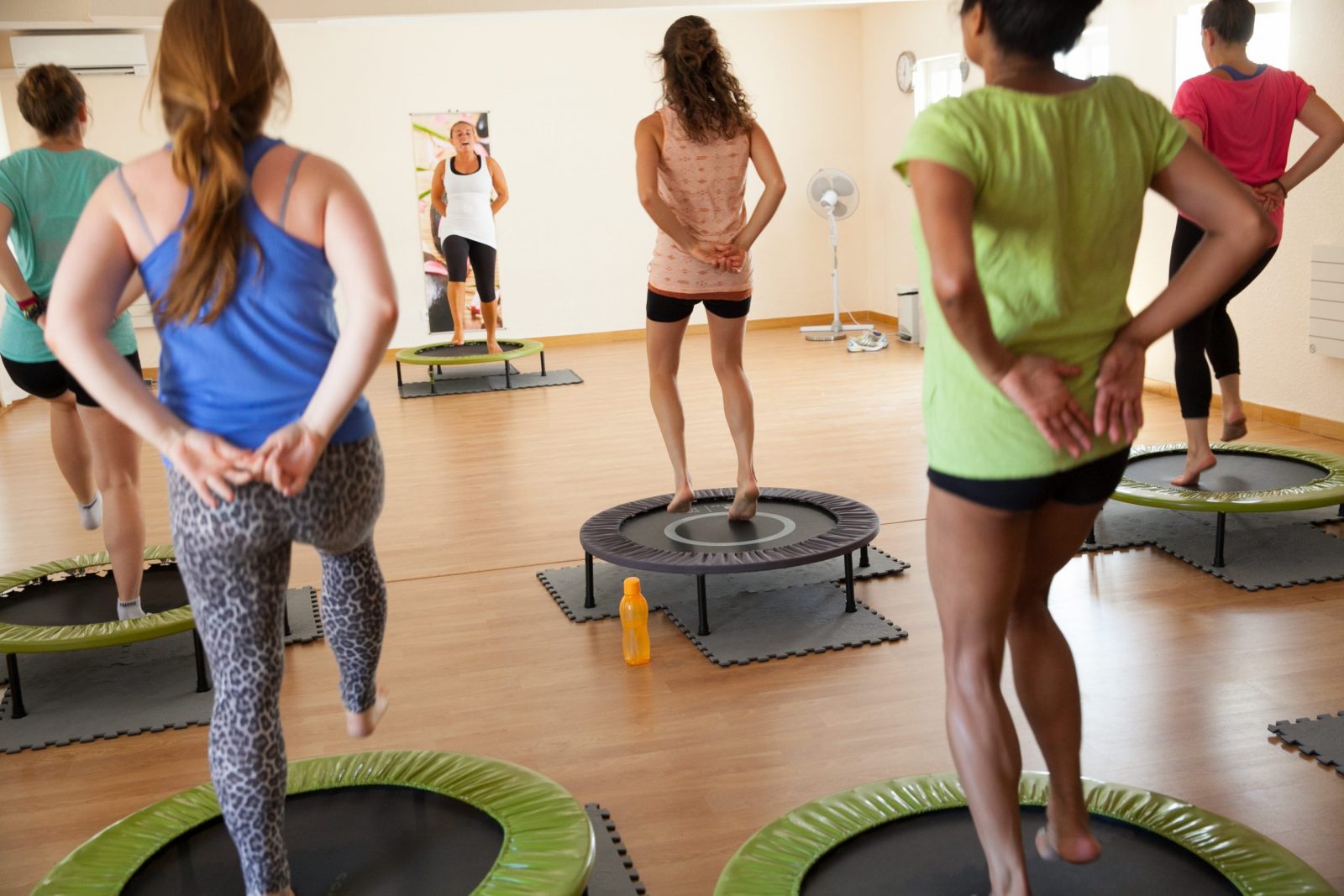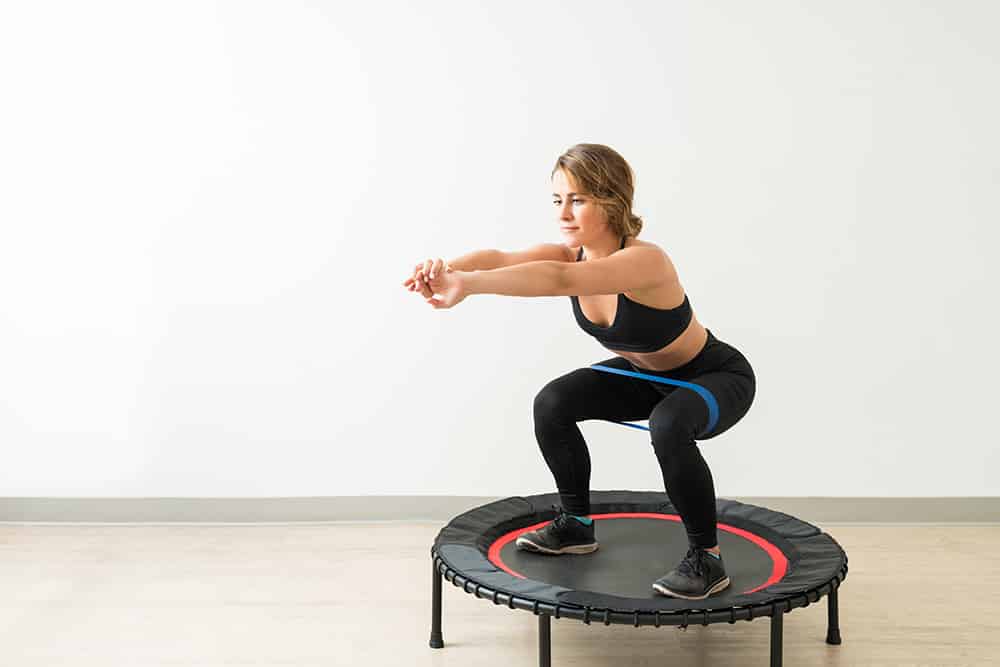Looking for a fun and effective exercise that can help you stay fit and healthy? Look no further than rebounding! Rebounding, also known as mini trampoline exercise, has gained popularity in recent years for its numerous health benefits. But is rebounding really a good exercise? Here we find out the science behind rebounding and explore why it can be a fantastic addition to your fitness routine.
Contents
Is Rebounding Good Exercise?

Rebounding is not just a fun and enjoyable activity; it’s also a highly effective exercise that can help you stay fit and healthy. If you’re wondering whether rebounding is good exercise, the answer is yes!
Here are some reasons why rebounding is considered a great form of exercise:
- Low-impact: Unlike high-impact exercises such as running or jumping rope, rebounding is a low-impact exercise that puts less stress on your joints. The mini trampoline absorbs some of the force, reducing the risk of injury and making it suitable for people of all fitness levels.
- Cardiovascular benefits: Rebounding is an excellent cardiovascular exercise that gets your heart pumping and increases your oxygen intake. It helps improve your cardiovascular fitness, strengthens your heart, and enhances your overall endurance.
- Muscle toning: Rebounding engages multiple muscle groups, including your legs, core, and glutes. The jumping motion stimulates your muscles and helps improve their tone and strength. Regular rebounding sessions can lead to leaner, more defined muscles.
- Balance and coordination: Bouncing on a mini trampoline requires coordination and balance. By practicing rebounding regularly, you can enhance your balance and coordination skills, which are essential for overall athleticism and injury prevention.
- Lymphatic system stimulation: Rebounding is known to stimulate the lymphatic system, which plays a crucial role in detoxifying the body and boosting the immune system. The up-and-down movement of rebounding helps mobilize lymph fluid, aiding in the removal of toxins from the body.
Rebounding vs. Similar Workouts:

Rebounding stands out as a unique form of exercise due to its versatility and benefits. Let’s compare rebounding to similar workouts to help you understand why it might be the perfect fit for you.
1. Rebounding vs. Steady-state Cardio:
Steady-state cardio exercises such as running, cycling, or brisk walking have long been popular for cardiovascular fitness. They elevate your heart rate and provide a consistent endurance challenge. However, if you’re looking for a low-impact alternative that still gets your heart pumping, rebounding is an excellent choice.
Unlike steady-state cardio workouts, rebounding reduces the impact on your joints while still providing a dynamic cardiovascular workout. The trampoline helps absorb the shock and reduces stress on your joints, making it an ideal option for those who may have joint discomfort or are recovering from injuries.
2. Rebounding vs. High-Intensity Interval Training (HIIT):
HIIT workouts are known for their intense bursts of activity alternated with periods of active recovery. These workouts are effective for burning calories, increasing endurance, and boosting metabolism. While HIIT can be highly beneficial, it can also be demanding on your joints and may not be suitable for everyone.
Rebounding offers an alternative option for high-intensity interval training that is gentler on your joints. With rebounding, you can enjoy the benefits of increased heart rate, improved cardiovascular fitness, and calorie burn without putting excessive strain on your joints.
3. Rebounding vs. Strength Training:
Strength training is essential for building muscle, improving bone density, and increasing overall strength. Traditionally, strength training exercises involve weights or resistance machines. However, incorporating rebounding into your strength training routine can add a new dimension to your workouts.
Using the trampoline as a prop, you can perform exercises like step-ups, squats, and incline planks to engage your muscles in a different way. Rebounding adds an element of instability, forcing your muscles to work harder to maintain balance and control. This combination of resistance and instability can enhance the effectiveness of your strength training routine and target muscles that may be overlooked in traditional weightlifting.
How to Start Using Your Rebounder?

To help you get started, here are a few key tips:
- Set up your rebounder: Find a suitable space in your home where you can safely place your rebounder. Make sure there’s enough clearance around it to prevent any accidents. If you’re using an outdoor rebounder, ensure that the surface is stable and free of any sharp objects.
- Warm up: As with any form of exercise, it’s essential to warm up your body before jumping on the rebounder. Start with some dynamic stretches, leg swings, or light cardio exercises to get your blood flowing and prepare your muscles for the workout.
- Perfect your form: Proper form is crucial to maximize the benefits and minimize the risk of injury during rebounding. Focus on maintaining good posture, keeping your core engaged, and landing softly on the rebounder surface. Imagine there’s a low ceiling overhead to encourage controlled and controlled movements.
- Start with simple movements: If you’re new to rebounding, begin with basic exercises to familiarize yourself with the technique. Hopping with your feet together, knee jumps, and jumping jacks are excellent exercises to start with. Gradually increase the intensity and complexity of your movements as you become more comfortable and confident on the rebounder.
- Mix up your workouts: To keep your rebounding routine challenging and exciting, incorporate a variety of exercises. Experiment with different movements and variations like twists, kicks, and arm exercises. You can also follow along with rebounding workout videos or join online classes for guidance and motivation.
Frequently Asked Questions:
How quickly do you see results from rebounding?
You can expect to see weight loss results within 12 to 20 weeks of starting a rebounding exercise program.
Is rebounding as good as walking?
Rebounding can burn more calories than walking or jogging, making it a great alternative for an effective workout.
What are the cons of rebounding?
Rebounding may not be suitable for individuals with pinched nerves, osteoporosis, or sciatica due to the strain it can put on the spine and joints.

Hello, I’m Ravindra. Over the years, I’ve immersed myself deeply into the world of fitness and health, transforming both my body and mind. Writing has allowed me to share my journey, insights, and expertise with those just starting out and seasoned fitness enthusiasts alike. Beyond just routines and diets, I believe in inspiring others to adopt a holistic approach to well-being.
